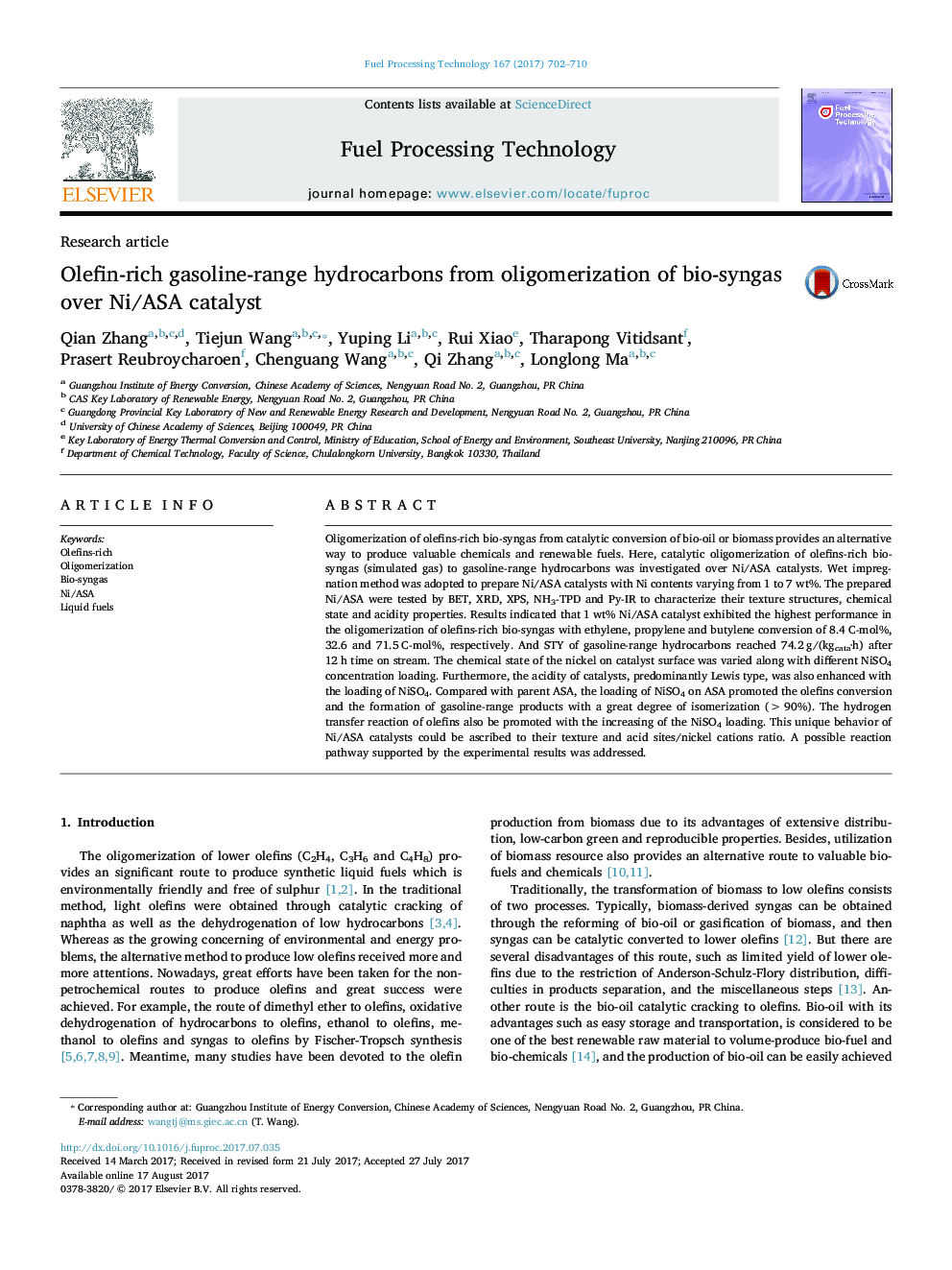| Article ID | Journal | Published Year | Pages | File Type |
|---|---|---|---|---|
| 6476384 | Fuel Processing Technology | 2017 | 9 Pages |
â¢Oligomerization of olefins-rich bio-syngas provides an alternative way to produce valuable chemicals and fuels.â¢The catalytic performance may relevant to the balance between acid and nickel ion sites.â¢High Ni loading amount of Ni/ASA may enhance the hydrogenation reaction of olefins.â¢The dominant products from oligomerization of bio-syngas was gasoline-range olefins with a great degree of isomerization.â¢A possible reaction pathway supported by the experimental results was addressed.
Oligomerization of olefins-rich bio-syngas from catalytic conversion of bio-oil or biomass provides an alternative way to produce valuable chemicals and renewable fuels. Here, catalytic oligomerization of olefins-rich bio-syngas (simulated gas) to gasoline-range hydrocarbons was investigated over Ni/ASA catalysts. Wet impregnation method was adopted to prepare Ni/ASA catalysts with Ni contents varying from 1 to 7 wt%. The prepared Ni/ASA were tested by BET, XRD, XPS, NH3-TPD and Py-IR to characterize their texture structures, chemical state and acidity properties. Results indicated that 1 wt% Ni/ASA catalyst exhibited the highest performance in the oligomerization of olefins-rich bio-syngas with ethylene, propylene and butylene conversion of 8.4 C-mol%, 32.6 and 71.5 C-mol%, respectively. And STY of gasoline-range hydrocarbons reached 74.2 g/(kgcata·h) after 12 h time on stream. The chemical state of the nickel on catalyst surface was varied along with different NiSO4 concentration loading. Furthermore, the acidity of catalysts, predominantly Lewis type, was also enhanced with the loading of NiSO4. Compared with parent ASA, the loading of NiSO4 on ASA promoted the olefins conversion and the formation of gasoline-range products with a great degree of isomerization (> 90%). The hydrogen transfer reaction of olefins also be promoted with the increasing of the NiSO4 loading. This unique behavior of Ni/ASA catalysts could be ascribed to their texture and acid sites/nickel cations ratio. A possible reaction pathway supported by the experimental results was addressed.
Graphical abstractDownload high-res image (224KB)Download full-size image
